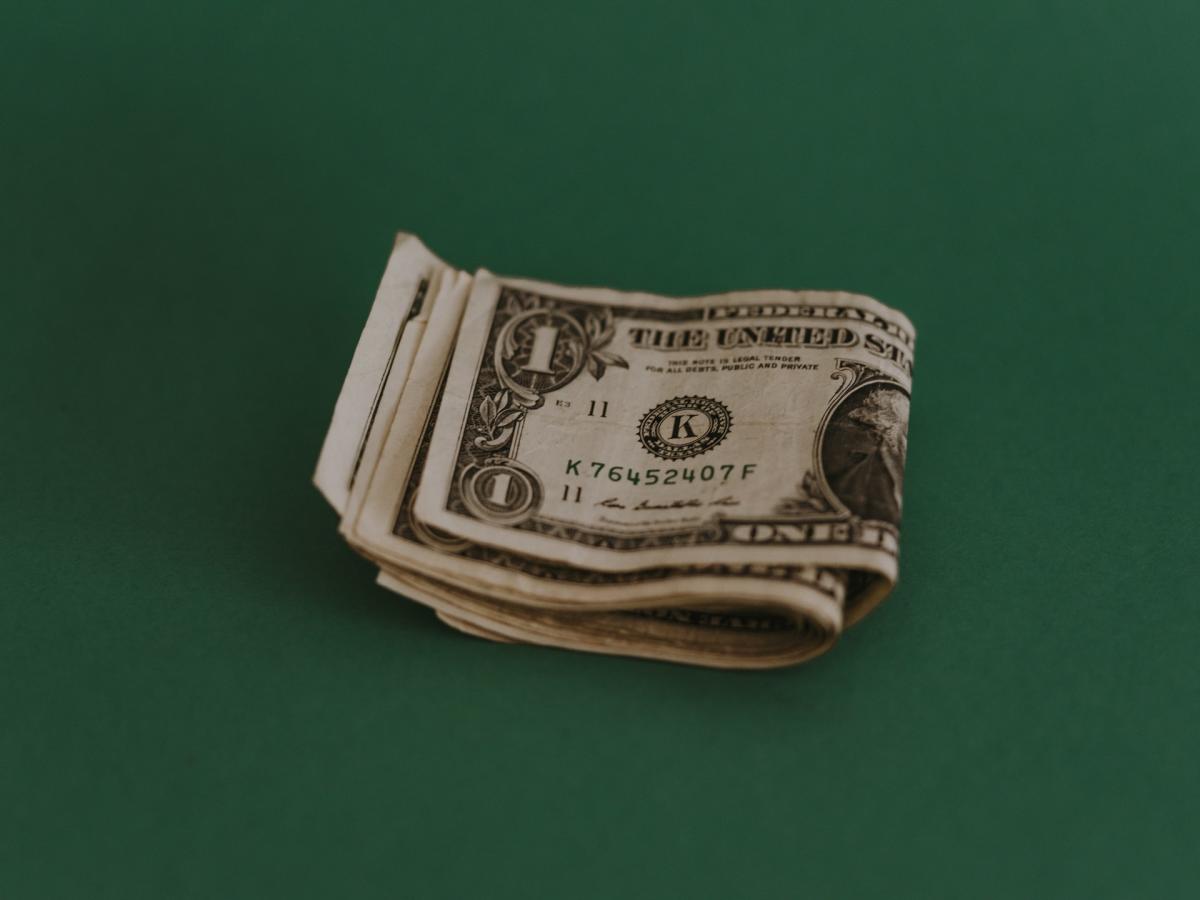Lifestyle
Is Spring Break in Houston a #RecessionIndicator?

It’s Will Smith announcing a new album. It’s “Mamma Mia!” returning to Broadway. It’s the uptick in law school applications.
And it’s absolutely spring breaking in Houston.
In recent weeks, as the finance world has been nervously watching the S&P 500 fall, nonexperts and the chronically online are seeing signs of a possible recession in daily activities and choices. To them, a recession looks like visiting the Asian elephant exhibit at the Houston Zoo nearby instead of traveling to Asia. Or the rising interest in torts law and a decrease in creative movies.
Posts on X and TikTok with the hashtag #recessionindicator are mostly jokes or even cheeky insults about activities seen as cheap. But they also reflect public interest in how pop culture and trends might be affected by economic uncertainty, experts say.
Sequels are an easy target for the label of “recession indicator.” For some, the announcement of a fourth season of “Ted Lasso” or a sequel to “Freaky Friday” signaled that studios were tightening purse strings instead of greenlighting risky, innovative material.
“It is kind of funny to think that Jason Sudeikis is having trouble paying off his third pool, so he’s like, ‘Time to put the mustache back on!’” Rob McRae, 39, a podcast producer, said referring to the actor who plays the show’s title character.
Of course, movies, television shows and albums are pitched and planned well before they are announced, making them lagging indicators of the economy. If anything, the songs and movies released down the line could reflect today’s economic situation.
“We may be booming in two years, but you will see the scarring effects of this,” Kenneth Rogoff, a professor of economics at Harvard, said in an interview. “You’re kind of seeing now decisions that were made a few years ago.”
A better gauge of consumers’ concerns could be their habits. “If you bring liquor to the get-together, are yall taking the remainder of yall liquor at the end?” asked one X user. The question immediately became fodder for the trend and circulated widely. One popular reply was “Yes & even before the recession.”
Professor Rogoff chuckled at the hypothetical, though he found this scenario unlikely (an indication that he has never partied with journalists). But the nugget of truth is that people tend to eat out less and spend less on gifts when they are concerned about a recession.
The #recessionindicator meme is, in many ways, a repackaging of well-known academic theories. Take the “hemline index,” which posits that skirts get longer as the economy slows. Hair length and chocolate sales have also been analyzed as possible reflections of consumer sentiment.
Terry F. Pettijohn II, a professor of psychology at Coastal Carolina University, has spent more than two decades studying how the economy affects people’s decision-making.
“When social and economic times are more difficult, we prefer music that is slower, more romantic, more meaningful lyrics,” Professor Pettijohn said in an interview this month. “And when times are good, we prefer music that is more upbeat, fun, with less meaningful lyrics.”
It is not a perfect system. The top song of 2008 was the dance party anthem “Low” by Flo Rida. Maybe listeners heard “Stock market got low, low, low, low, low, low, low, low”?
Sometimes, even the upbeat music incorporates themes of the moment, such as Timbaland’s 2007 song “The Way I Are,” which starts with the line “I ain’t got no money.”
Today’s music charts are filled with slower, more meaningful songs and ballads, reflecting the economic strain, Professor Pettijohn argued.
He named Billie Eilish’s “Birds of a Feather” and “Wildflower,” as well as “Die With a Smile” by Lady Gaga and Bruno Mars, as examples. Indeed, Lady Gaga and Bruno Mars are wildly popular artists and their song might have spent 30 weeks on the Billboard Hot 100 chart regardless of the economic backdrop.
But an overall mood shift has become clearer.
This month, a Doechii song initially released in 2019 landed on the Billboard Hot 100. The title? “Anxiety.” The beat? Sampled from the 2011 hit song “Somebody That I Used to Know.” Well, that’s basically a sequel. #recessionindicator.

Lifestyle
The cancer quietly killing young people : It's Been a Minute

Why aren’t we talking about colorectal cancer?
Getty Images
hide caption
toggle caption
Getty Images
If more and more young people are dying of colorectal cancer, why aren’t we talking about it? Is it because we’re too ashamed of our bodies?
Rates of colorectal cancer are rising, especially for people under 50. But it’s hard to raise awareness for a cancer that a lot of us find hard to talk about. In a recent essay for The Cut, writer Laurie Abraham described her experience of colon cancer, which included a lot of embarrassment. Talking about your bowel movements is…not fun. Can you relate?
Today, Brittany is joined by Laurie and Dr. Kimmie Ng, Co-Director of the Colon and Rectal Cancer Center at the Dana-Farber Cancer Institute, to get into the cultural shame around how we talk about colon cancer – and how that extends to a lack of funding and research.
Follow Brittany Luse on Instagram: @bmluse
For handpicked podcast recommendations every week, subscribe to NPR’s Pod Club newsletter at npr.org/podclub.
This episode was produced by Corey Antonio Rose and Liam McBain. It was edited by Neena Pathak. Engineering support came from Becky Brown. Our Supervising Producer is Barton Girdwood. Our Executive Producer is Veralyn Williams. Our VP of Programming is Yolanda Sangweni.
Lifestyle
How one man in East L.A. ended up with the world's most famous feet

In an overstuffed workshop in East L.A., Chris Francis reached out a heavily tattooed arm and pulled a single shoe box from one of the floor-to-ceiling shelves lining the walls.
“Anjelica Huston,” the shoemaker and artist said. “Let’s see what’s in here.”
Removing the top of the box, he revealed two carved wooden forms known as shoe lasts that cobblers use to make their wares. Beneath those were strips of yellowing shoe patterns and a tracing of the actor’s foot with a note written in loopy cursive:
To Pasquale
My happy feet shall thank you
— Anjelica Huston
The Di Fabrizio collection includes shoe measurements for stars like Nancy Sinatra, Kim Novak, Joe Pesci and Madeline Kahn, all adorned with green, white and red striped ribbon.
(Allen J. Schaben / Los Angeles Times)
“Cool, huh?” Francis said, gazing reverently at the box’s contents. “Every time I open one it’s amazing. It’s like Christmas all the time.”
-
Share via
For the last three years, Francis has been surrounded by a sprawling archive of famous feet originally amassed by Pasquale Di Fabrizio, the late shoemaker to the stars. From the early ‘60s to the early 2000s, Di Fabrizio created custom footwear for the rich, famous and notorious out of his humble shoe shop on 3rd Street.
The shoes went to his customers, but his voluminous collection includes shoe lasts, patterns, drawings, correspondences, leather samples and handwritten notes from thousands of clients, all stored in cardboard shoe boxes that the Italian immigrant trimmed with green, white and red striped ribbon.
The names, written in bold Magic Marker on the front of each box are a who’s who of entertainers from the ‘60s, ‘70s, ‘80s and beyond: Liza Minnelli, Tom Jones, Richard Pryor, Robert De Niro, Sarah Jessica Parker, Bea Arthur, Arsenio Hall, Nancy Sinatra, Ace Frehley. The list goes on and on.

Francis found foot measurements, wooden shoe lasts and a shoe in progress that Pasquale Di Fabrizio made for Ginger Rogers in a box marked with her name.
(Allen J. Schaben / Los Angeles Times)

“Shoe Machine” is one of Chris Francis’ art pieces that he has shown at museums.
(Allen J. Schaben / Los Angeles Times)
“So many great people stood on these pieces of paper,” Francis said, looking at the stacks of boxes around him. “Roy Orbison. Eva Gabor. Stella Stevens. Lauren Bacall. I could pull these down all day.”
Francis never met Di Fabrizio, who died in 2008, but in 2022 he traded two pairs of his sculptural shoe-art pieces to Di Fabrizio’s friend and fellow shoemaker Gary Kazanchyan for the entirety of the Italian shoemaker’s archive. Three years later, Francis is still making his way through it all.
The amount of material is overwhelming, but he is committed to preserving Di Fabrizio’s legacy. Ultimately, he wants to find a space where he can share it with others.
“I never want to be without it, but I’m realistic that it deserves to be appreciated by more than just myself,” he said. “If my life’s work ended up in somebody’s hands, I don’t think I’d want them to just keep it for themselves forever.”
A shoemaker’s journey
Francis isn’t just cataloging L.A.’s shoemaking history, he’s helping to keep it alive.
Over the last decade and a half he’s made a name for himself as a custom shoemaker, creating handmade bespoke footwear for rockers like former Runaways guitarist Lita Ford and Steve Jones of the Sex Pistols, as well as sculptural art shoes that are displayed in museums like the Craft Contemporary, the Palm Springs Art Museum and SCAD FASH in Atlanta.

Wooden shoe lasts hang from the ceiling as Chris Francis works on a shoe for the singer Lita Ford in his garage.
(Christina House / Los Angeles Times)
In his East L.A. workshop, he eschews modern technology, focusing instead on traditional methods of shoemaking, often with hand tools.
“The handmade shoe is alive and well in this shop,” he said, dressed in pressed black slacks and tinted sunglasses, chunky gold rings gleaming on his fingers. “There’s no computer here, and even the records half the time are vinyls or 78s.”
Making shoes by hand is time-consuming and expensive work — Francis doesn’t sell a pair of shoes for less than $1,800 — but for his mostly musician clientele, a sturdy, custom-made, comfortable shoe that also boasts over-the-top style is well worth the price.
“At my price point, my customers are buying something that’s really a tool,” he said. “It’s part of their look, but it also has to hit 27 guitar pedals, keep all of its crystal, be beautiful, last multiple tours and they have to be able to stand in it all night.”
Francis, who has a certain aging-rocker swagger himself, never expected to become a shoemaker.
After going to art school and hopping freight trains for several years, he moved to Los Angeles in 2002 originally to join the Merchant Marines. Instead he found work hanging multi-story graphics and billboards on the side of hotels and high-rises on the Sunset Strip and at casinos in Las Vegas. “That gave me the same thrill of riding a freight train,” he said. “Being on a high-rise building and rappelling down.”

Francis found fabric samples and designs for shoes that Pasquale Di Fabrizio made for a Broadway production of the musical “Marilyn: An American Fable.”
(Allen J. Schaben / Los Angeles Times)

Shoemaker and artist Chris Francis makes shoes the traditional way in his workshop in East Los Angeles.
(Allen J. Schaben / Los Angeles Times)
He discovered he had a knack for pattern making in 2008 when he began creating hand-stitched leather jackets to wear to the Hollywood parties he had started attending with his now-fiancee. One day a stranger approached him and said she knew someone who would appreciate a jacket like the ones he was making. She was a stylist for Arnel Pineda, the lead singer of Journey. Commissions from Mötley Crüe and other rock bands followed.
A few years later he became interested in making shoes, but although he knocked on the door of several shoe shops in town, he couldn’t find a mentor.
“They didn’t have time, or they’d say, ‘You belong in a rock and roll band, you’re not one of us,’” he said. “But I would say, ‘Just teach me one thing, one trick.’ And everyone had time to teach one trick.”
It was an education in much more than shoemaking.
“Almost every shoemaker I met had immigrated to the country,” he said. “So I learned how to make shoes from the Italians, from guys from Armenia, Iran, Iraq, Russia, Syria, from everybody. And while doing so, I learned about all these different cultures.”
‘He was the king’
As Francis dove deeper into the history of shoemaking in Los Angeles, one name kept coming up again and again: Pasquale Di Fabrizio.

The late Pasquale Di Fabrizio, a cobbler to the Hollywood elite, photographed in front of his collection of shoe lasts, circa 1982.
(Bret Lundberg / Images Press / Getty Images)
“I started asking other makers about him, and they were like, ‘Oh yeah, we remember him,’” Francis said. “He was the king.”
For more than 50 years Di Fabrizio was the most sought after shoemaker in Los Angeles. He made Liberace’s rhinestone-encrusted footwear and shod Mickey Mouse, Goofy and Donald Duck for touring productions of Disney on Parade. He was the go-to shoemaker for country western stars, Vegas showgirls, Hollywood movie stars, gospel singers and casino owners. The Rat Pack helped put him on the map.
“My best customer is Dean Martin,” Di Fabrizio told The Times in 1972. “He buys 40 pairs a year.”
Sporting a thick, bristled mustache and oversize glasses, Di Fabrizio had a tough reputation. He once kicked a movie star out of his shop because the star brought back a pair of patent leather shoes that he claimed were defective. Di Fabrizio accused him of missing the urinal and peeing on them at the Oscars.
“Never come back here again,” he said in his thick Italian accent.
The shoemaker occasionally made house calls, but his customers mostly came to him. In his workshop on 3rd Street near Crescent Heights, he would trace their bare feet on a piece of paper and measure the circumference of each of their feet at the ball, around the arch, the heel and the ankle. Then he would customize a pre-carved wooden last from Italy, adding thin pieces of leather 1 millimeter at a time to more perfectly mimic the unique shape of the client’s foot.
The size and shapes of the lasts varied wildly. He once told a reporter that it took “half a cow” to make shoes for Wilt Chamberlain, who wore a size 15. In his archives, Francis found a petite high heel shoe last roughly the length of his hand.

Francis holds a foot tracing and shoe lasts made for Robert De Niro by Pasquale Di Fabrizio.
(Allen J. Schaben / Los Angeles Times)
“Di Fabrizio did lots of shoes for little people,” Francis said. “He really offered an important service for that community. They could have formal footwear rather than having only the option of wearing kids shoes.”
The same lasts could be used over and over again to make several pairs of shoes, as long as the heel height was the same. Each last went in its own box decorated with a ribbon in the colors of the Italian flag.
“It’s so simple, but he claims his territory with that ribbon,” Francis said. “He cared enough to take one extra step. It’s what really made that collection iconic.”
A legacy preserved
Francis first encountered Di Fabrizio’s archives in 2010 when Kazanchyan offered him a job at Andre #1 Custom Made Shoes on Sunset Boulevard. Kazanchyan inherited the shop from his uncle, Andre Kazanchyan, who once worked with Di Fabrizio and became his good friend.
Gary Kazanchyan and Di Fabrizio were close as well. When Di Fabrizio retired in the early 2000s, Kazanchyan hired all of the guys who worked at his shop. Di Fabrizio was at Kazanchyan’s wedding and when the older shoemaker was in a nursing home at the end of his life, Kazanchyan visited him every day.
For years Kazanchyan stored as many of the ribbon-trimmed boxes as he could fit in his Hollywood shop, but just before COVID he moved his shop to his garage in Burbank and transferred Di Fabrizio’s archives to his backyard. “At one point, my whole backyard was this mountain of shoe lasts,” he said.

Chris Francis, left, and Gary Kazanchyan at Palermo’s Italian Restaurant in Los Feliz.
(Deborah Netburn / Los Angeles Times)
Kazanchyan started a renovation on his house in 2022 and could no longer store Di Fabrizio’s archive in his backyard. He’d sold some of the most famous shoe lasts at auction — a bundle of Di Fabrizio’s shoe lasts for Frank Sinatra, Dean Martin and Sammy Davis Jr. went for $4,375 in 2013 — but he still had several tons of material stacked on pallets and covered in tarps. He remembered that Francis loved the collection, so he called him and asked if he wanted it. Francis did.
Francis didn’t have the money to purchase the collection in cash, but he offered Kazanchyan two art pieces that he’d exhibited and Kazanchyan accepted. The first carload of boxes Francis took to his studio included lasts for Wayne Newton, Paula Abdul, Ginger Rogers, Burt Reynolds and Sylvester Stallone.
“My excitement was on fire,” he said.
Francis spent a few weeks sorting through the archive and discarding lasts and shoe boxes that were too covered in mold or deteriorated to be worth keeping. Just before a rainstorm threatened the rest of the collection, he brought thousands of shoe lasts to his studio but even now regrets that he was unable to save it all.
“I tried to grab the big names, but there was so much I couldn’t keep,” he said. “It was heartbreaking.”
The boxes hold stories — and life lessons
Living and working among the Di Fabrizio collection has taught Francis a lot more than just the art of making shoes.
“I’m constantly seeing the obituary of a celebrity who has passed and I go to the workshop and there’s their box,” he said. “It really lets you know that life is for the living. It’s up to you to be responsible and live your life when you’re alive. Be yourself, teach others, leave something behind.”
Hanging onto the collection has not been easy — but Francis believes he was chosen from beyond to care for Di Fabrizio’s archive and to share it with others responsibly.
He’s still not sure what that will look like, but he’s determined to try.
And in the meantime, he is also determined to keep the traditional art of shoemaking alive in Los Angeles.
If you look around his workshop, you’ll spot several boxes adorned with red, white and blue striped ribbon.
Francis is making those boxes his own.

Working with hand tools, Chris Francis makes a custom pair of shoes for musician Lita Ford.
(Christina House / Los Angeles Times)
Lifestyle
Bobbi Brown doesn’t listen to men in suits about makeup : Wild Card with Rachel Martin

A note from Wild Card host Rachel Martin: Bobbi Brown’s massively successful career started because of two words, “Why not?” Why not cold call a bunch of famous make up artists to get her first job in the industry? Why not make her own make up? Why not go into business with a global cosmetics brand, then break up with them decades later? Why not start over in her sixties, launch a new company and become a TikTok star in the process?
When Bobbi Brown asks “Why not?” it’s like she’s daring someone to answer. Daring someone to curb her ambition or thwart her dreams. Which is impossible since she has already made up her mind to go for it.
-

 Finance1 week ago
Finance1 week agoReimagining Finance: Derek Kudsee on Coda’s AI-Powered Future
-

 World6 days ago
World6 days agoSyria’s new president takes center stage at UNGA as concerns linger over terrorist past
-
North Dakota7 days ago
Board approves Brent Sanford as new ‘commissioner’ of North Dakota University System
-

 Technology6 days ago
Technology6 days agoThese earbuds include a tiny wired microphone you can hold
-

 Culture6 days ago
Culture6 days agoTest Your Memory of These Classic Books for Young Readers
-

 Crypto6 days ago
Crypto6 days agoTexas brothers charged in cryptocurrency kidnapping, robbery in MN
-

 Crypto1 week ago
Crypto1 week agoEU Enforcers Arrest 5 Over €100M Cryptocurrency Scam – Law360
-

 Rhode Island1 week ago
Rhode Island1 week agoThe Ocean State’s Bond With Robert Redford




















